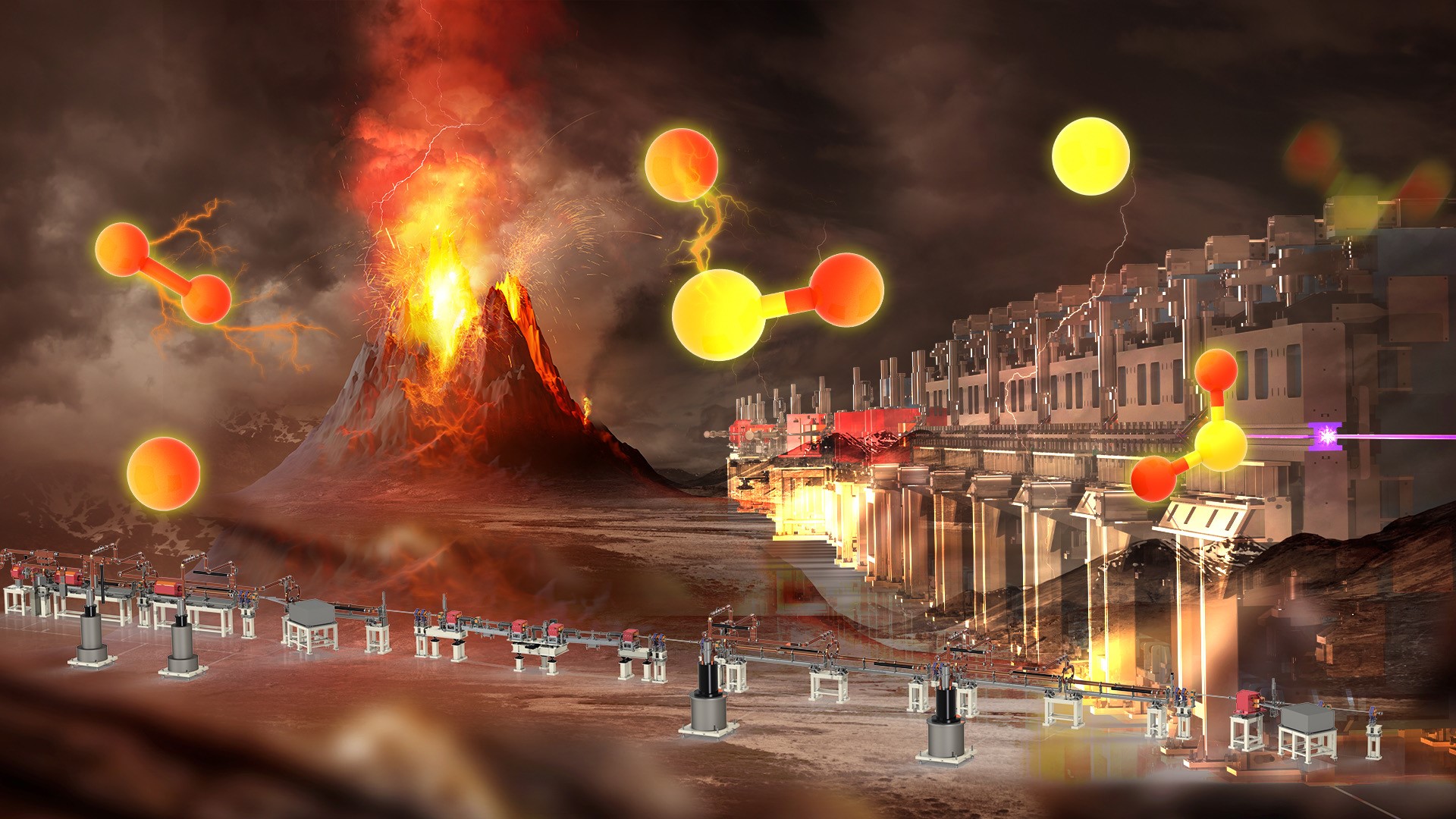Roaming reaction, as a special type of reaction mechanism in chemistry, was discovered and began to receive widespread attention in the early 21st century. The analysis of the mechanism of roaming reaction in current experiments and theories is limited to the low electronic state of molecules and related ground state products. The roaming reaction mechanism of highly excited states of molecules has always been a major challenge in experimental detection and theoretical research due to the high electron excitation energy surface in the high-energy region.
Chemical reactions are supposed to occur along their minimum energy paths. In recent years, so-called roaming reactions that stray far from this path have begun to be observed, but only for chemical species in their ground state or, at most, their first excited state. However, researchers have now observed a roaming reaction even in highly excited energy states.

Chair Professor Xueming Yang from the College of Science at the Southern University of Science and Technology (SUSTech), in collaboration with the experimental team of Professor Kaijun Yuan and the theoretical team of Chair Professor Donghui Zhang and Professor Bina Fu at the Dalian Institute of Chemical Physics (Chinese Academy of Sciences), have observed so-called “roaming” chemical reactions, those that at certain points move away from the lowest minimum energy “path of least resistance”, in highly excited energy states for the first time.
Their work, entitled “Roaming in highly excited states: The central atom elimination of triatomic molecule decomposition”, has been published in Science.
Sulfur dioxide (SO2) is the main component in volcanic eruption gases. The research team found that extreme ultraviolet photolysis can directly produce oxygen, which is considered to be an important inducing mechanism for early Earth’s major oxidation events. Subsequently, they conducted an in-depth investigation on the kinetic mechanism of sulfur dioxide extreme ultraviolet oxygen production.
The researchers observed roaming in a highly excited state for the first time, in this case during the photodissociation of sulfur dioxide (SO2) molecules into sulfur and oxygen (a molecule of SO2 breaks down into an atom of sulfur, S, and one molecule of oxygen, O2, when bombarded by light).
Their results revealed two different possible pathways for dissociation. One proceeds along the expected minimum energy path to produce a “vibrationally colder” O2 molecule, and the other yields a “vibrationally hotter” O2 molecule in its electronically excited state.
This work combines high-resolution experiments and high-precision theoretical research to demonstrate the first case of highly excited states roaming reaction channels in molecular photodissociation processes, illustrating the universality of roaming reactions in chemical reactions and providing a new perspective for understanding and predicting chemical reactions. Roaming reactions pose a challenge to traditional chemical reaction theories, which will encourage scientists to develop new theoretical models and computational methods to more accurately describe and predict chemical reactions.
“Through this research, we have gained a new understanding of previous theories of chemical reactions. Many phenomena that traditional chemical reaction theories cannot explain may be explained through roaming reaction mechanisms, which will enhance people’s further understanding of the essence of chemical reactions. Every breakthrough in basic research expands the boundaries of human cognition and expands human knowledge reserves”, Xueming Yang said.
SUSTech is a collaborative institution for the paper.
This work was supported by the Innovation Program for Quantum Science and Technology, National Natural Science Foundation of China (NSFC), and the Scientific Instrument Developing Project of the Chinese Academy of Sciences.
Paper link: https://www.science.org/doi/10.1126/science.adn3357
To read all stories about SUSTech science, subscribe to the monthly SUSTech Newsletter.
Proofread ByAdrian Cremin, Yingying XIA
Photo ByYan QIU